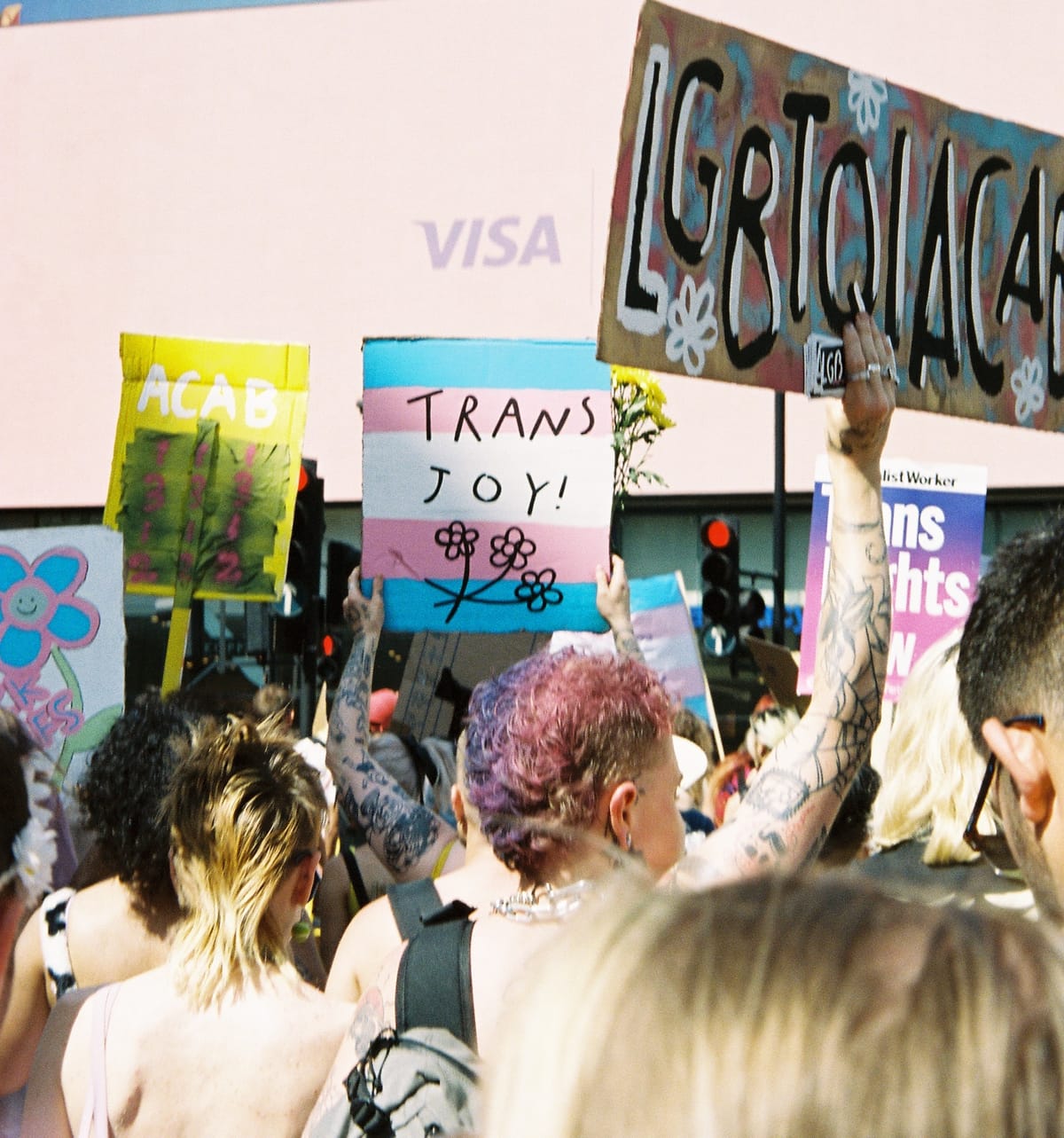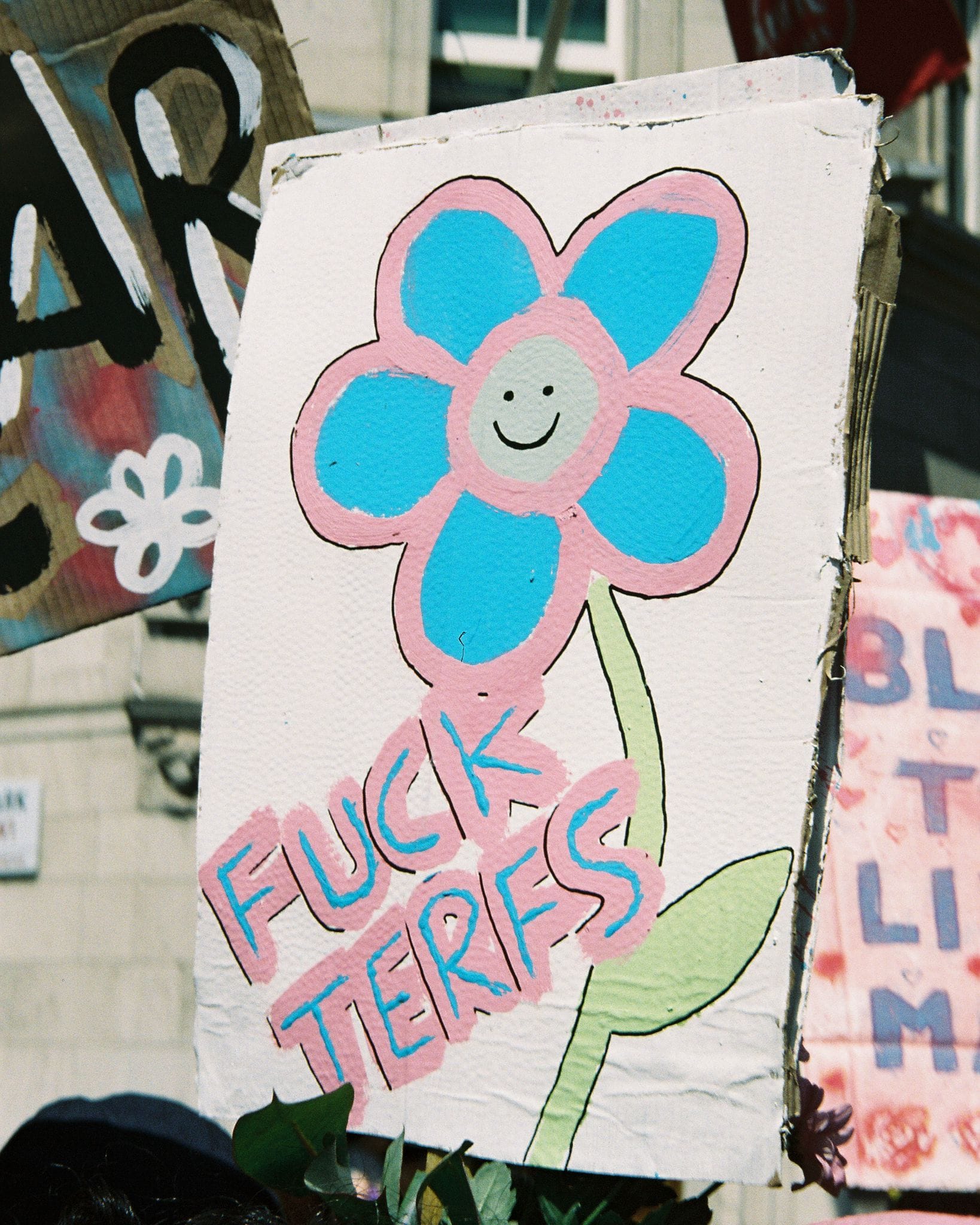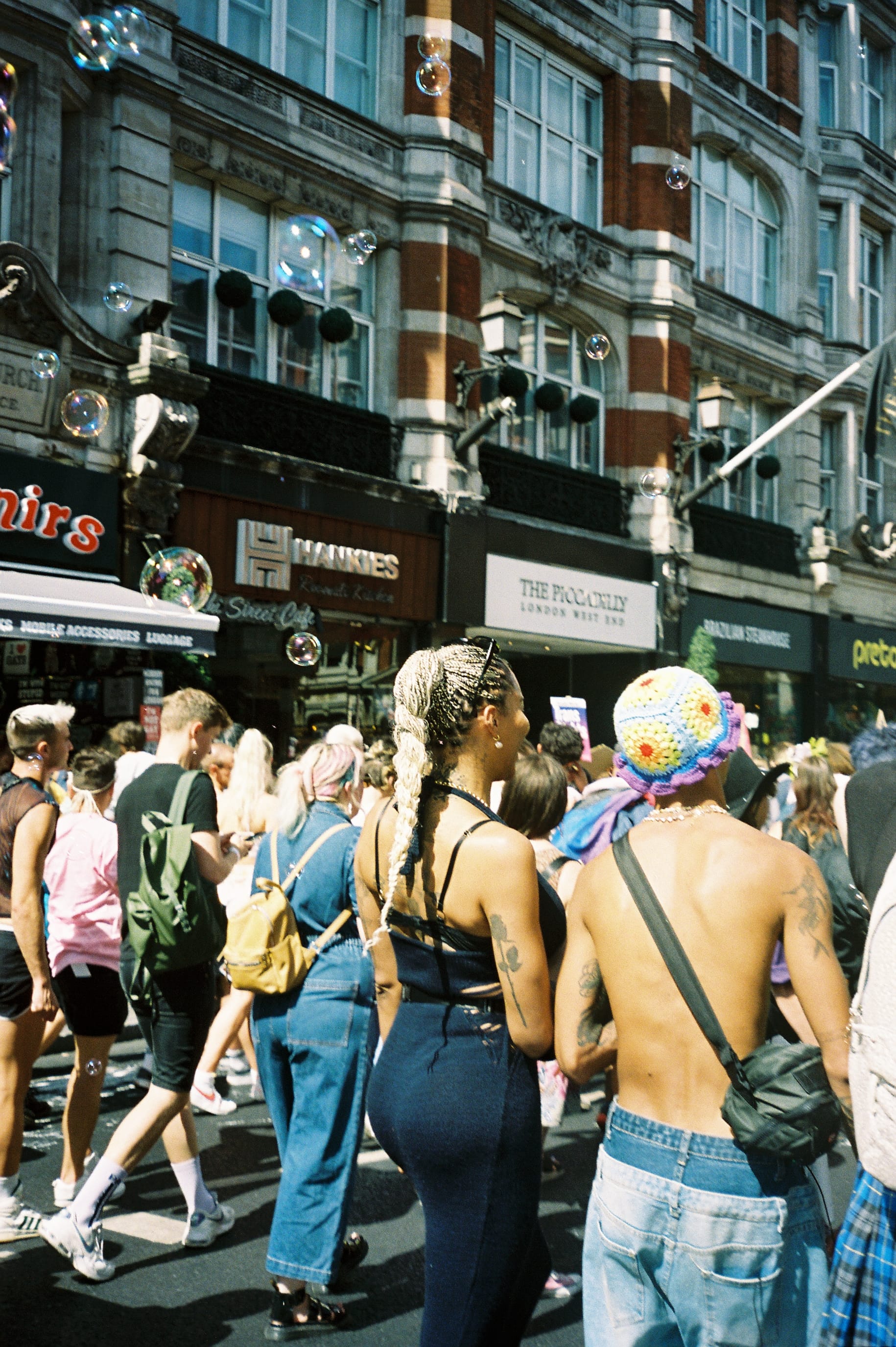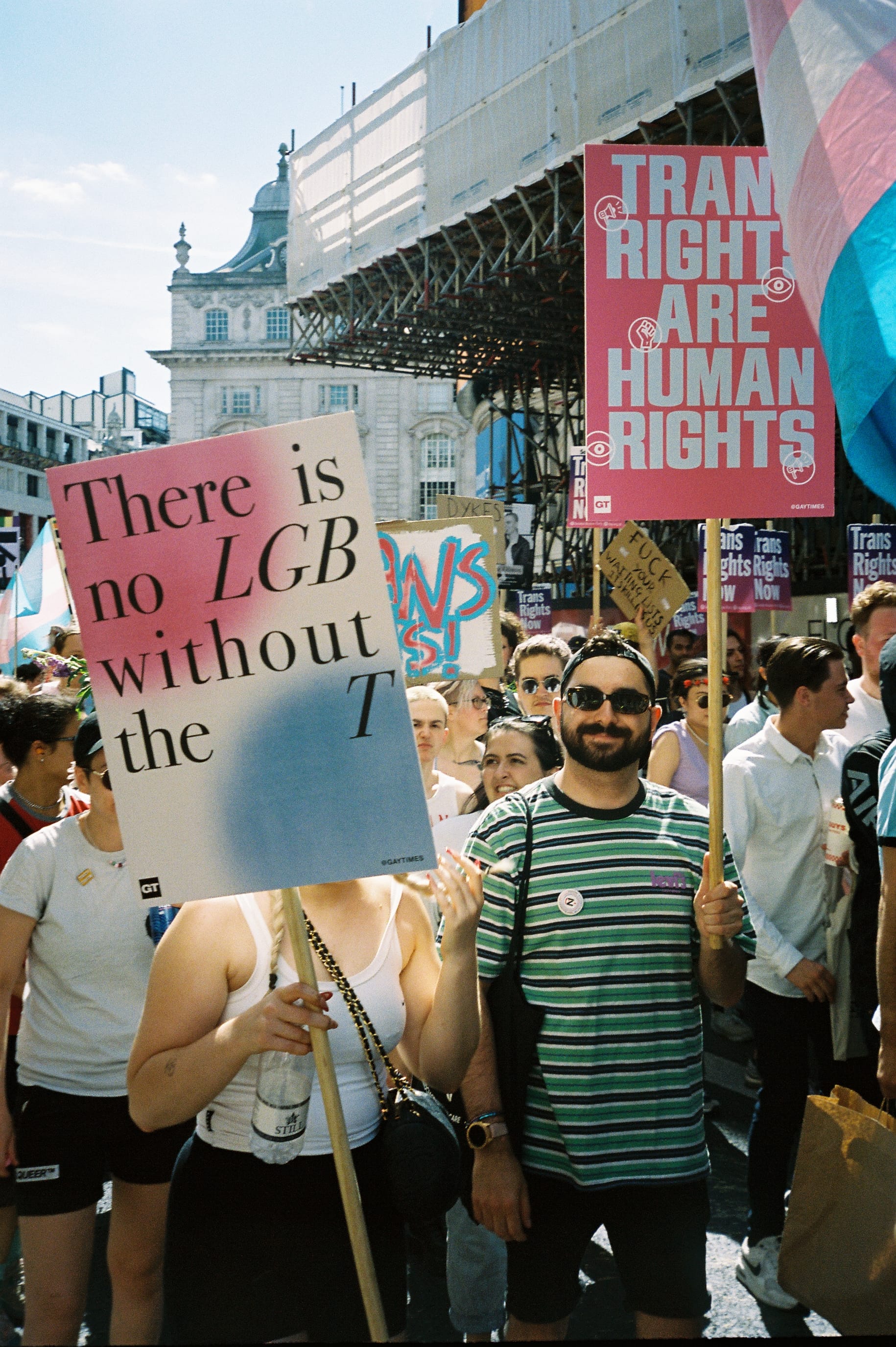How to plan a direct action
Want to plan a protest? Here's how

Words: Eliel Cruz
When those with power make decisions against our civil liberties, the people must rise up and remind them we’re the ones who actually hold the power. One way to do this is by protesting, or as organisers call it, planning a direct action. Unlike indirect actions – such as voting, signing petitions, or contacting elected officials – direct action is about bringing the fight to the streets and often to the decision maker's doorstep. At its core, direct action is about disruption. That is why organisers implement blockades, chain themselves to buildings, or interrupt events. The message is simple: life can not continue as normal. We must be heard.
Throughout history, civil rights movements have used direct actions for most of our major wins. It’s through disruptive actions like marches, rallies, sit ins, or boycotts that we have seen the public perception, culture, and laws change on issues like segregation and Black Americans’ civil rights, gay people and our fight for healthcare or access to marriage, or women’s rights from voting to sex-based discrimination in schools or the workplace. More recently, we’ve seen a rise in direct actions in the form of birdogging for climate action and to end the genocide in Gaza.
During my career as an organiser, I’ve organised actions where the turnout was a few dozen people and actions as large as 20,000 people. The steps are mostly the same, just to scale. For LGBTQIA+ communities, our actions are often in response to violence in our community, too often, homicides of trans people; legislation attacking us, or in response to an institution like a company, hospital, school, or church taking an anti-LGBTQIA+ action. If you’re interested in planning your first protest, here are a few things to think through.

What’s the goal and who is the target?
There can be multiple goals for a direct action. Sometimes it’s about bringing awareness to the issue because not enough people are talking about it. More often, it’s about applying pressure to the people who made the anti-LGBTQIA+ decision or about mobilizing large groups of people to show mass resistance. It’s important to assess what the goal is and decipher who the target is, to then inform what kind of action you want to take.
Figuring out your target might take some research and digging into. The goal is not only to identify the institution responsible for the rollbacks or steps against LGBTQIA+ rights, but also who the person(s) at these places are calling the shots. Is it the CEO, a director of a program, the owner of the bar, or the board of the university? Who is the decision maker who can change the conditions? The target may not be immediately clear, but doing that research will be helpful to know what actual actions may apply pressure or move the person.
Importantly, it’s not always a protest that our community needs. Sometimes, like in response to homicides, we’re planning a vigil – a public funeral and space for mourning. Instead of protest signs, you will see photos of the individual who was killed, candles, or balloons. For vigils, it’s processing grief in public and alerting the surrounding community of the hate violence that took place. Other times when there isn’t a clear consensus about the anti-LGBTQIA+ decision within the community, it could make more sense to organise a town hall where folks can have an inter-community conversation about what took place and what actions should follow. Or, if the sole goal is more media attention, and you aren’t sure about community turnout, it may make more sense to plan a press conference with a few key community leaders and take your message directly to the media.
To permit or not to permit?
First and foremost, if you’re protesting the state or government, acquiring a permit for your protest defeats the purpose and no longer makes it disruptive. With permits, the state is able to dictate the parameters of your protest and deploy police to keep you in line. There are a few instances where I believe getting a permit makes sense, particularly when it comes to certain communities' safety or when the target is not the state, but some institution in which you can secure a permit close to their location.
For example, this last February, I helped organise a rally for trans youth in response to hospitals in New York preemptively canceling appointments or no longer taking new patients for gender affirming care. The rally had mostly trans youth ages 10-17 speaking, and to ensure their safety, and make sure we could have the sound system we needed to amplify their voices without the police shutting it down, we applied for a permit. Thousands of people came, and the youth were able to be heard through the large sound system we acquired. The location was also across the street from one of the hospitals that rolled back their commitments to caring for trans youth, and so we were able to point and identify the building throughout the speeches. It’s a rare instance in my organising career where we secured a permit, but all the factors made sense to do so.

Getting ready for your first march or rally
Marches and rallies are the typical go-tos for direct actions and are typically lower risk in terms of the potential for arrest. There is also civil disobedience, in which, most of the time, participants are going into the direct action with the intention of getting arrested. Like the recent bathroom sit-in I helped organise where fifteen of us were arrested protesting Rep. Nancy Mace’s transantagonism and bathroom bigotry. But for this column, I’m going over the lower-risk types of direct actions.
For a march or rally, the location is one of the most important aspects of the direct action. It’ll be helpful if you do some location scouting at different places and figure out how you’d stage the space. You’ll want to mobilise people as close to the place that will apply the most pressure or march to that location. It could be a rally in front of a company’s offices, or in front of an elected official’s office or house.
Once you have your location, here’s a non-exhaustive list of things or roles you’ll need to fill:
- An emcee will be the person who moves along the program. Ideally, they’re good at leading chants, can bridge the space between speakers with some commentary, and are agile to shift things quickly as things come up.
- Additional chant leads besides the emcee could help give the emcee a break. It’s always fun to try and create new chants that speak directly to the reason for your action and break up the monotony of hearing the same chants at every single protest.
- Before selecting your speakers, you should figure out what the messages or demands that need to be made are and then work backwards. It should be as simple as a one-pager (or less) with bullet points of key messaging to share with your emcee and speakers. Keeping your speaker program tight, with a time limit for speeches and typically a good 5-7 speakers, will be stronger than 12 speakers. Selecting each speaker to hit 1-2 certain points will help you have a cohesive narrative arc throughout the program and keep it from being repetitive.
- From your messaging points, your flyers, signs, and banners should reinforce those messages throughout the crowd. Depending on how much time you have before your action, planning an art build with the community is a great way to get people plugged into your action and build excitement for it.
- For accessibility and to ensure everyone can hear the program, securing some type of sound, at a minimum a megaphone, will allow everyone to engage in the rally. At the same time, amplified sound is one of the reasons police will give to shut down unpermitted events. If police take away your sound or threaten to shut you down, you can resort to the People’s Mic, which is when a speaker shortens their talk to a few words or a sentence at a time, and the crowd responds in a call-and-repeat fashion to amplify the speaker.
- Depending on how large of a turnout you may have, and the different communities that could show up, securing ASL or other interpretation keeps it so everyone of all different abilities can participate. Similarly, it could be helpful to secure some seating for disabled folks if your program is going to run long.
- Identifying a police liaison for when police come to your protest is incredibly important. Instead of having multiple people who speak to the police, one or two people who were predetermined for that role will keep things organised. This role’s job is to negotiate with the police to keep the action from being shut down. It could be helpful for this role to be filled by people with greater privilege, like those who are white, straight, or cisgender. The police liaison will work to keep the action going for as long as needed without police interference.
- Instead of security, we have safety teams for direct actions. These safety teams are often filled with multiple roles, including marshals, who shut down streets in marches, or folks with training on de-escalation to intervene when counter-protestors arrive or when conflict arises within the community. They can also include medics in case someone is harmed during the action, overheats due to being in the sun too long, or generally needs care. My friend and organiser, Kalaya'an Mendoza of Nonviolent Peace Force, is often my go-to for a safety team lead and is a great resource for those interested in staying safe at actions.
- If it is likely that the police might get aggressive or threaten arrests, legal observers who can be there to document police violence will be helpful. They’re often marked in neon green hats and focus on ensuring the First Amendment right to free speech and protest is protected. Your organizing team should be up to date on your rights to protest, and it is helpful to share, either on social media or in trainings in the lead up, Know Your Rights with folks who are interested in participating. ACLU’s resources on Know Your Rights are helpful, and the National Lawyers’ Guild in the United States has a great program with legal observers at their local chapters across the country.
- Never underestimate the need for sustenance at actions! Pooling some money to buy water or snacks can help keep people there longer. If it’s a colder time of the season, secure hand or foot warmers. Masks can help people who are COVID-cautious participate as well. A variety of resources that can be passed out by volunteer marshals can help people feel taken care of during your action.

Do you have demands? What’s the follow-up?
Sometimes your direct action will be one and done. You sent your message, and that was all that was needed. There are also times when your direct action may be launching a longer campaign. If you made demands of your target, how will you hold them accountable and ensure they listen to them? When you made your demands, did you give them a hard timeline? If so, what’s your follow-up? Will you plan another action or find other ways to escalate? Following through with your direct actions shows your target that you’re not messing around. Ultimately, organising a direct action is flexing your community-based power. Organising alongside your friends and co-conspirators can be some of the most rewarding experiences you’ll have in movement advocacy work.
At its best, actions can be a microcosm of the world we’re trying to build: A place where all are included, people show up and take care of one another, where we can create safety without police, provide food, water, and healthcare to those harmed or in need.
It’s these slivers of the future where one can realise that a better world is possible.
